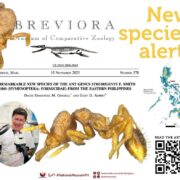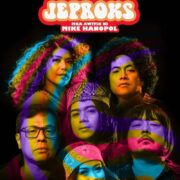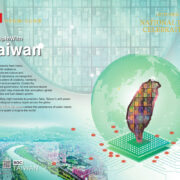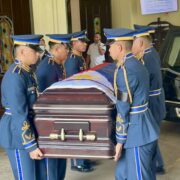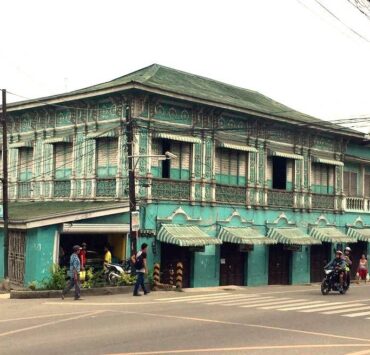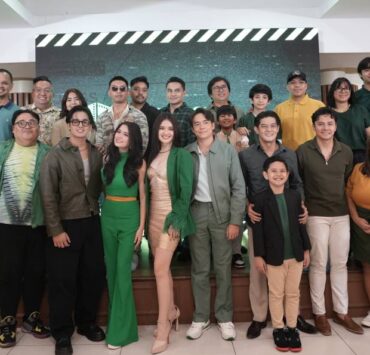A game of visual riddles with Aro Soriano
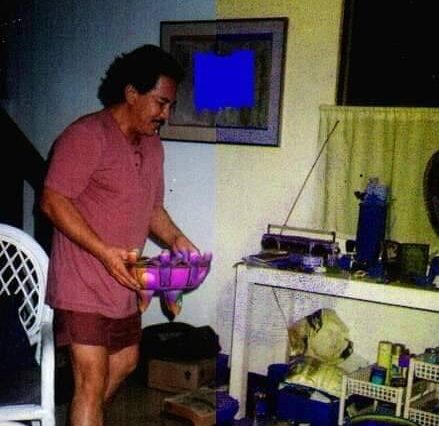
If you ever find yourself stepping into a showcase of Lazaro “Aro” Soriano’s paintings, the first thing that will likely catch your eye is the colors. They pop, they’re bright, and one might say they’re even garish. Electric greens flirt with shocking pinks. Skies are swathed in yellows; nights are imbued with prismatic hues.
And then there are the figures: cartoonish, some funny-looking, with exaggerated features. Their eyes are glazed over; their faces, frozen in scowls. And almost always, they’re engaged in absurdist comedy versions of otherwise mundane scenes or chores. Anyone fancy seeing a chef frying colorful eggs laid by, yes, a rooster—perched on his arm?
But if such visuals aren’t enough to reel you in, then perhaps this piece of detail will: In Soriano’s curious world, where literature and art collide, Filipino riddles, proverbs, folk songs, and folklore are whimsically reinterpreted for the canvas. As such, every piece is a fun little challenge waiting to be solved. The titles will clue you in, but it’s up to you to find the answers, or wisdom, hidden amid the mishmash of distractions meant to mislead you.
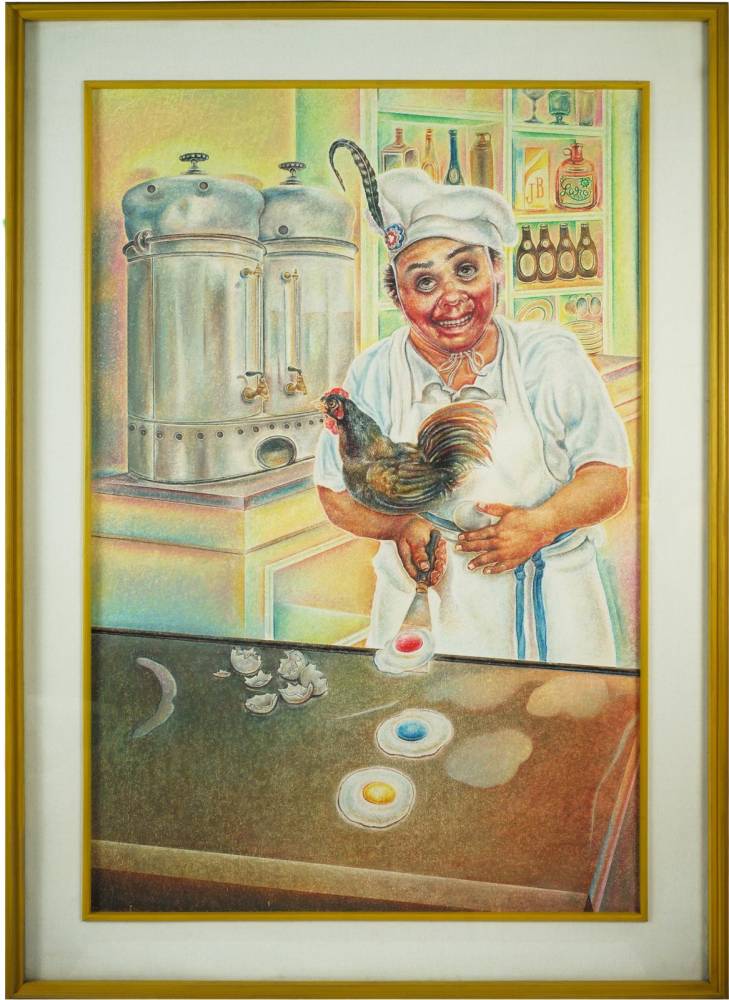
Now if this sounds like a game you would like to play, then head over to Gallery Genesis in Estancia Mall in Pasig City for “Palaro ni Aro”—an upcoming exhibit of the late visual artist’s paintings, from Feb. 15 to March 5.
“This is quite different from our previous exhibits, which were either realistic or abstract in nature. We felt that calling it ‘palaro’ is most appropriate, because each painting sort of creates an interactive game between the artist and viewers. In fact, on our opening day, we’re going have our guests take part in guessing games,” Gallery Genesis president Patrice Salas told Lifestyle.
54 pieces
A dozen or so of the 54 pieces that will be hung on the Gallery Genesis walls were already exhibited in previous editions of the annual Art Fair Philippines. But the rest of the comprehensive collection, Salas said, will be hauled from the vault, where they had been sitting “for the longest time.”
“The paintings received a lot of good feedback and reviews from Filipino audiences at the Art Fair, primarily because of the riddles in them. Initially, we thought it would mostly be the older audiences who would appreciate the paintings. But much to our surprise, many younger people—the millennials and Gen Z—enjoyed figuring out the riddles at the exhibit,” she said.
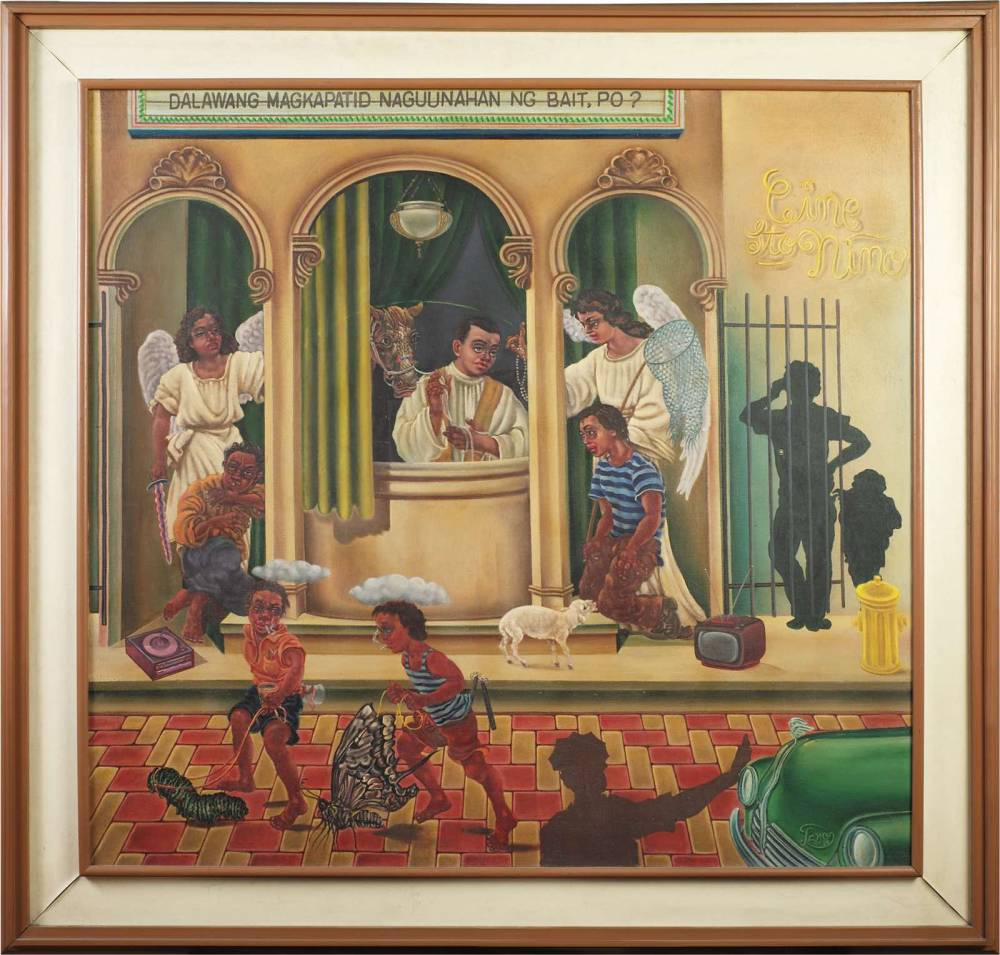
Soriano (1943-2020), whose most prolific years were between 1977 and 1992, held six one-man exhibits during his career as a painter, three of which were hosted by Gallery Genesis in the late 1980s and early 1990s. Among the pieces that will be on display in “Palaro”—predominantly oil paintings with a smattering of watercolor, acrylic, and pastel—are the riddles “Naghilamos si Kuting, May Bisitang Darating,” and “Dala Ko, Dala Mo, Dala Ka ng Dala Mo.”
There are proverbs like “Kung Anong Tinig ng Tubig ay Siyang Lalim ng Ilog” and “Kung Hindi Ukol, Hindi Bubukol”; mythical figures like “Inang Kalikasan” and “Diosa ng Tagsibol”; and the folk song-inspired “Atin Cu Pung Singsing,” and “Mutya ng Pasig.”
“Dishwasher,” meanwhile, is said to be a self-portrait from Soriano’s 11-year-stay in Europe, where he took on odd jobs in between studying in Spain and immersing himself in the French art scene.
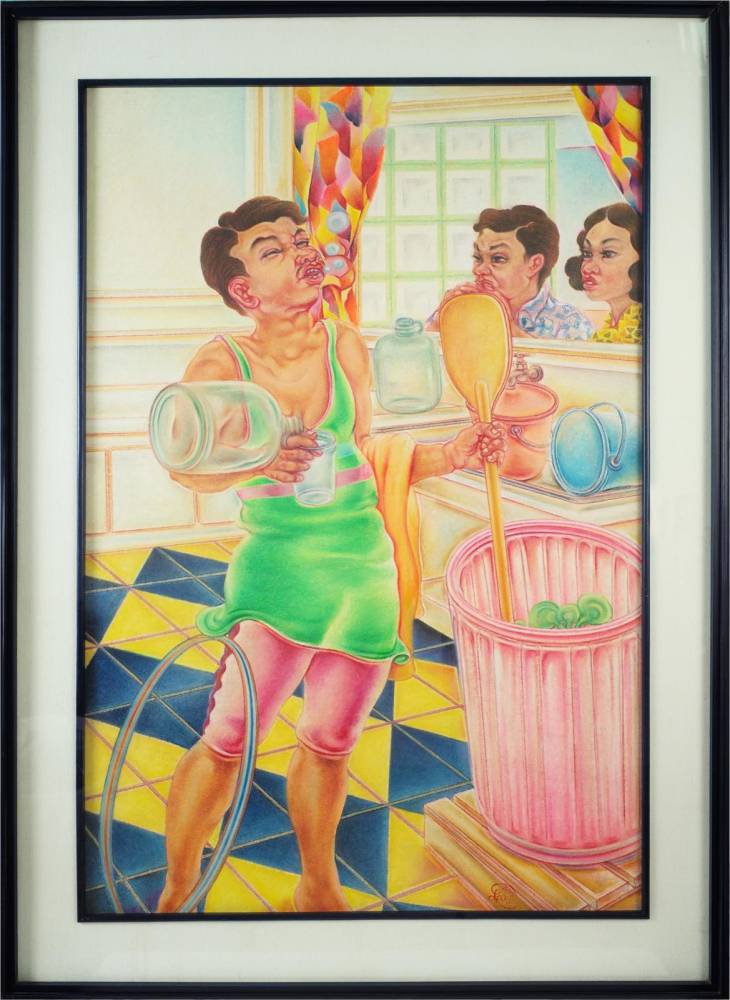
Fun and playful artist
“Seeing Aro’s paintings spark curiosity in people,” Salas said. “They wonder, ‘Why is the painting like that?’ ‘Why are the people portrayed that way?’ And it’s these questions that will eventually lead people to his background, his story. I think this exhibit can be a nice way to show Aro was a fun and playful artist.”
And that’s precisely how Salas’ mother, art collector and Gallery Genesis founder Araceli “Chichi” Salas, remembers Soriano. The paintings are fun, she said, because the painter himself was “fun and funny.” But more than the joyous energy or the sense of spontaneity that his works exude, they also never fail to provoke deeper thinking and reflection.
“He made me laugh most of the time. He had a very funny way of telling stories, and we, together with the other artists at the gallery, would just all laugh while we listened to his ideas. No wonder his paintings are so joyous. And oh, did he love his colors. He wasn’t afraid of them. He really did have fun working on his pieces,” Chichi told Lifestyle.
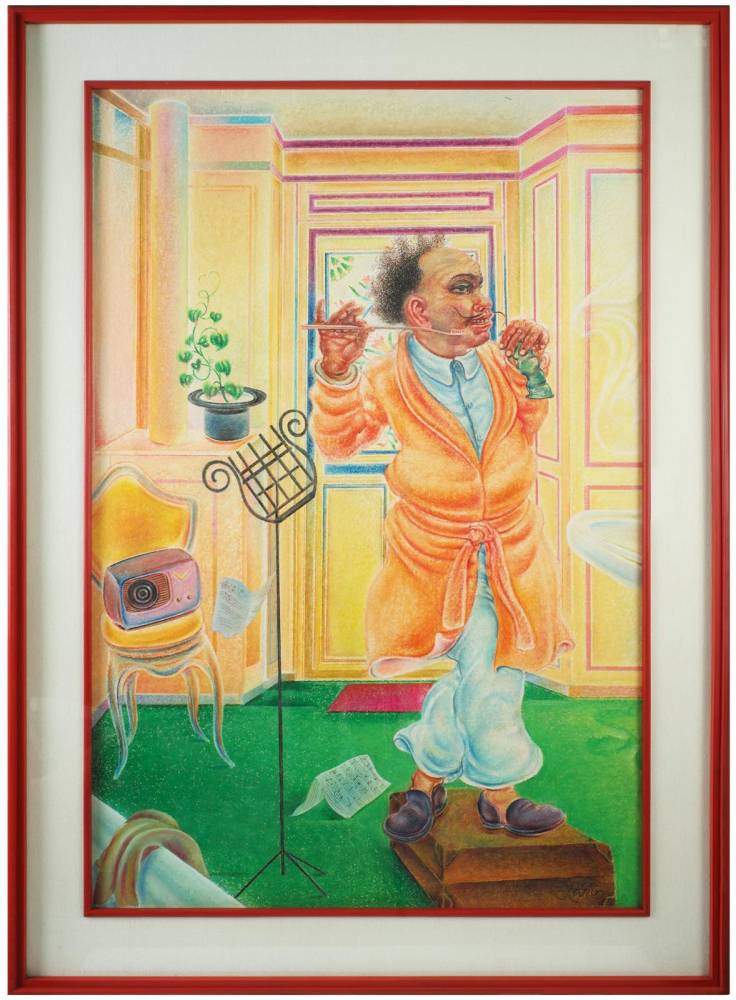
“His works make you wonder, ‘Bakit kaya pininta ni Aro ito?’” she added. “I miss the way he explained how the figures in his paintings come about. I was fond of him.”
Conversation starters
It goes without saying that Chichi adores Soriano’s work, so much so that she keeps some of his smaller ones at home. And they make for foolproof conversation starters with guests. “You tell them, ‘Look at this painting—it’s a riddle, actually!’ And so, you recite the riddle and make them guess what the right answer is,” Chichi said.
Soriano returned to the Philippines in 1981—the same year Chichi established Gallery Genesis with her husband, entrepreneur Ernesto Salas. Soon enough, they met. “He naturally got in touch with us,” Chichi said of Soriano, whose training in Europe—coupled with his strong Filipino perspective—allowed him to nurture his own stylized approach that defied conventions.
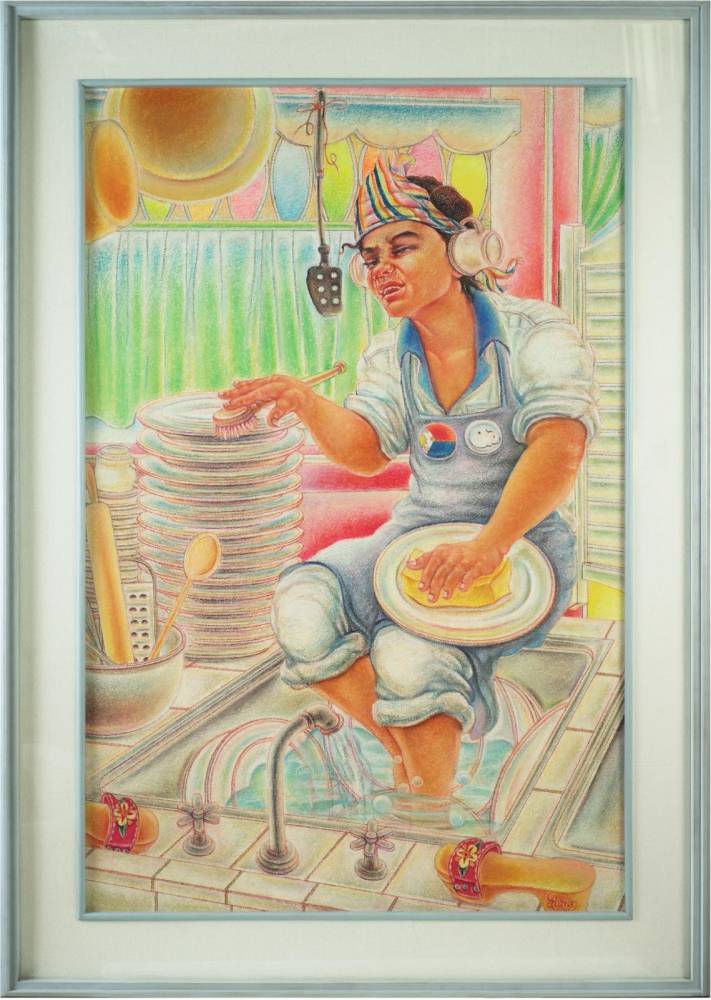
At first, Soriano painted Constructivist art. But then came the irresistible urge to delve into local folk traditions—an idea that promptly made Chichi’s eyes light up. “When he came back, I got the chance to know him. I got interested in his ideas because he wanted to promote very Filipino themes in his paintings—bugtong, salawikain. ‘I like that!’ I said, ‘No one else is doing it,’” she related.
“I love the idea of him painting subjects that remain in our memories, but are no longer popular,” added Chichi, whose gallery helped nurture Soriano’s gifts and provided him a platform.
Soriano was also driven by social realism, as shown in one of his most popular paintings, “Jack en Poy” (1987), which depicts the Edsa Revolution as a carnivalesque scene, with political and religious figures who seemingly reduce the concept of power and authority to a trivial game of rock-paper-scissors. “That one we donated to the Ateneo Art Gallery,” Chichi said.
Art conservation
Soriano’s art earned him recognition. In 1992, he was named one of the honorees of the Cultural Center of the Philippines’ Thirteen Artists Awards. Not too long after, Soriano—also an accomplished sculptor—ventured into art conservation, restoring such masterpieces as the 1963 oil portrait of Carmen Kierulf by the late National Artist Victorio Edades, who happened to be the former’s mentor at the University of Santo Tomas.
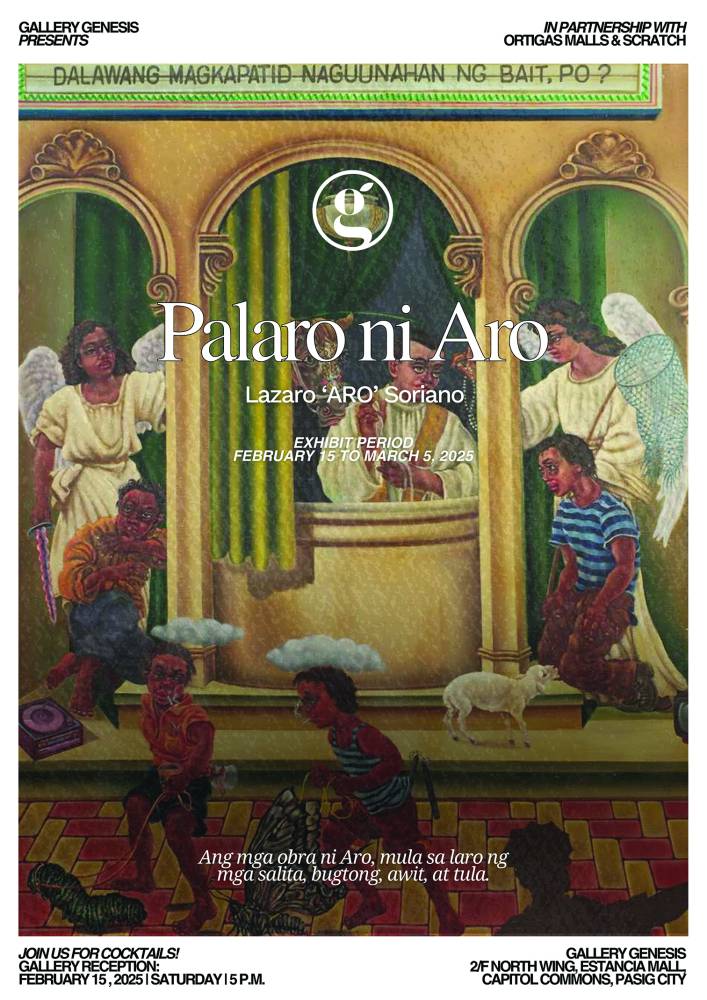
“I was puzzled why he would just drop out of painting. He knew people really enjoyed his works. It’s a pity he didn’t paint more. He painted plenty enough, but not enough to make him the big artist that he should have been,” Chichi said.
But while Soriano is quite “underrated” among Filipinos, the opposite is true, Chichi pointed out, for critics and fellow artists who hold him in very high esteem. “The likes of Eric Torres, Leo Benesa, Cid Reyes, and Alice Guillermo—they all loved and enjoyed his work,” Chichi said.
And through “Palaro,” Chichi hopes that today’s audiences would end up discovering not only the answers to Soriano’s visual riddles, but also the unheralded genius behind them.
“We had his paintings in our stockroom for a long while. Patrice and I thought that it was about time we put them out again, so we can familiarize people with Aro’s concepts and ideas,” Chichi said.


